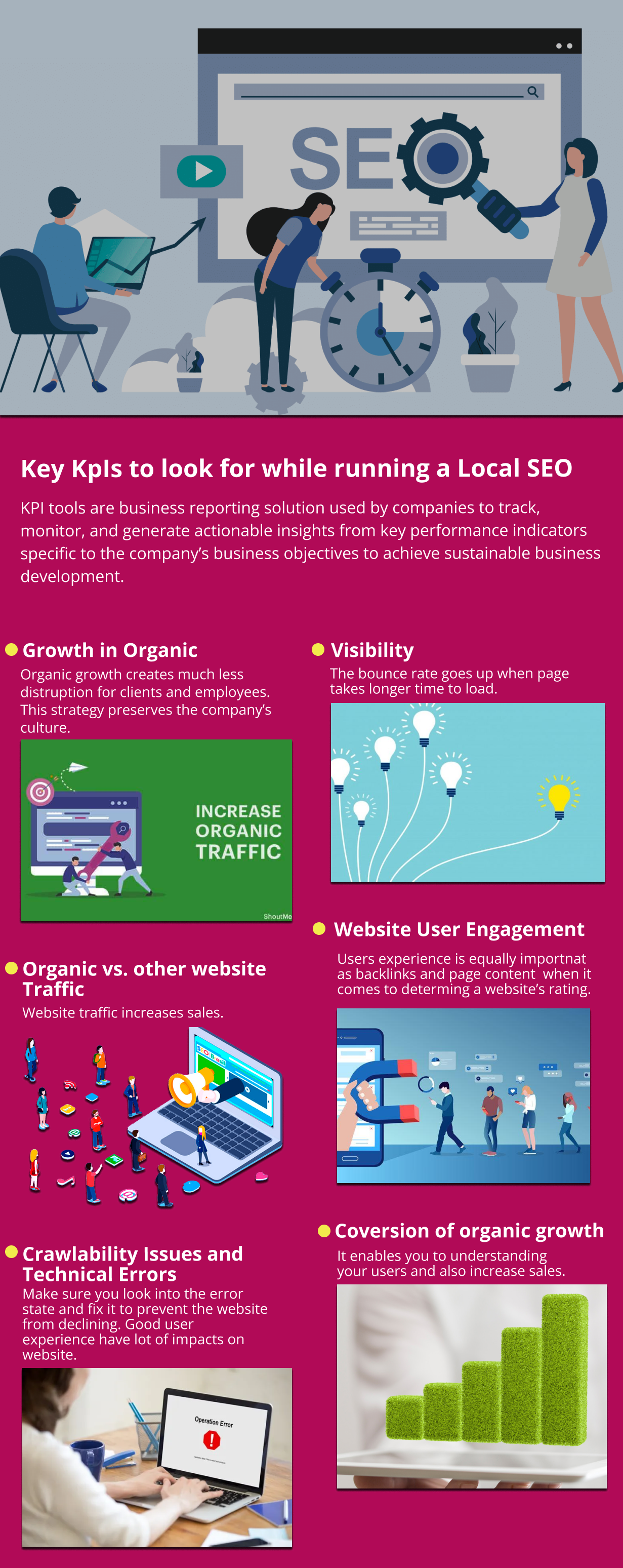 In order to get started with a local SEO campaign, there are a number of metrics to consider. Local SEO KPIs for business growth include the following.
In order to get started with a local SEO campaign, there are a number of metrics to consider. Local SEO KPIs for business growth include the following.
- Growth in Organic Traffic
- Organic vs. Other Website Traffic
- The Conversion For Organic Traffic
- Visibility of Your Listing
- Website User Engagement
- Crawlability Issues and Technical Errors
-
Growth In Organic Traffic
You can tell that more people are viewing your site if your organic traffic increases. A website’s growth potential is greater if it receives a consistent supply of new and qualified visitors. An important metric for any brand is the volume of organic visitors coming to their website. The conversion rate of websites with low levels of traffic is lower. As a result, you should begin your local SEO audit by keeping tabs on the volume of organic search traffic.
Analyzing the growth in organic traffic might help you determine the efficacy of your present marketing initiatives. Improve your efforts by keeping track of and evaluating this metric.
-
Organic vs. Other Website Traffic
You may grow your website with any form of traffic. Non-organic search traffic should be compared to organic search traffic when analyzing a website’s performance. Pay-per-click (PPC) advertising, affiliate marketing, and social media marketing are all examples of additional traffic sources to consider. Comparing traffic from these sources may be done using Google Analytics.
-
The Conversion For Organic Traffic
The quality of the traffic cannot be determined by tracking organic traffic. You may gauge the quality of a website’s traffic by tracking the number of organic conversions it receives. Include this metric in your local SEO audit to see if your efforts to attract a qualified target audience are paying off. Set a goal in Google Analytics to track organic conversions.
-
Visibility of Your Listing
As long as clients can’t easily find you, your efforts will be in vain. To ensure that your local business gets found, keep an eye on your Google Map Rankings and Google My Business Insights.
A thriving local business relies on both of these metrics to draw in new customers. It is important to know where your business appears in Google Maps, as well as how many people have viewed and interacted with your business.
-
Website User Engagement
User experience is equally important as backlinks and page content when it comes to determining a website’s rating. Having a high bounce rate indicates that your content is out-of-date, irrelevant, or insufficiently informative for your target audience. Informative and high-quality information increases participation on a big scale. These metrics are used by Google to rank a webpage.
These are the KPIs that should be the focus of your SEO audit. A high bounce rate is a sign that many people quickly exit your page when they arrive. Your visitors’ session duration and the number of pages they view are also taken into account here.
-
Crawlability Issues and Technical Errors
Despite your best efforts, crawling issues and technological mistakes have a significant influence on your website. Indexing issues prevent Google from properly accessing and crawling the content of your website. Slow page loading times and HTTP errors can also harm your search engine optimization (SEO) rankings.
Although it is not the most crucial item to evaluate throughout the audit, checking crawl patterns may help you detect potential concerns. It sheds light on how search engine crawlers view your site. The audit helps you improve your approach for publishing content. The discovery and immediate adjustment of any technological flaws detected are important for the health of a website.